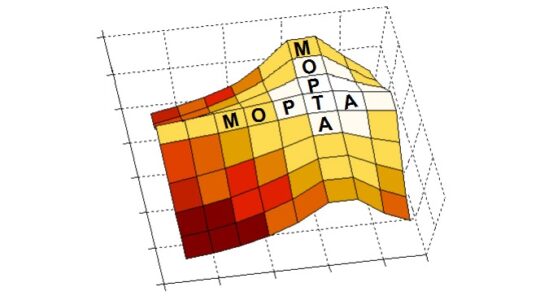
The first step in developing an optimisation solution is to find out where there is a suitable scenario to work on, where and why a business process is lacking, and what those indications will help us to focus the shot, to bet on projects that will be clear winners.
Our spotlight as experts in mathematical optimisation will be on the nature of the decisions made during these business processes. Namely, understanding these processes as flows, our attention will be on the intersections. Processes flow if they are well-oiled (which gives rise to other types of projects that attack operational inefficiencies), but they always do so between those critical moments when decisions have to be made. That’s where the processes bifurcate in one direction or another; that’s where, in a way, the collective intelligence we have as a company is condensed. And it clearly reveals how useful it can be for mathematics to assist the experts on whom the intelligence that makes us competitive rests.

How to dive into another company’s processes
- First and foremost, a scarce resource. It is an element involved in operations we must take care of because it is not infinite. Nothing can be an essential element of a business process if it is widely available.
Think, reader, of any sector of activity or your operations: your attention will jump from equipment or machinery to human resources, the always limited budget, the bandwidth of a communications network, the fleet of vehicles or warehouse space in logistics or transport environments, the time for the delivery of a product or service that marks the actual level of your competitiveness?
When approaching a client, it has always been effective for us to focus the conversation on what resources concern the client.
- The second ingredient is the impact that decisions about these resources will have on the KPIs of our business.
These KPIs can be varied: operating or production costs, the percentage of on-time delivery of our products or services, productivity in any of its forms, etc. If we think in the medium or long term, we should not ignore as an impact the possibility of developing new business models or even the gains in competitiveness that an improvement in these decisions could have as an emerging effect.
Whatever the KPIs are, making the right decisions about the resources affected must have a significant enough reward to merit our attention. It is not always the case, so this is why it is convenient to make these effects explicit.
- Finally, it is necessary to trace the context of the decision that we are making. The greater the complexity of that context, the more beneficial the mathematics will be.
Complexity is related to the number of alternatives we have on the table when we are about to make a given decision. In many scenarios, the combinatorial explosion arising from the volume of options is essential to resort to mathematics. Other times it is the constraints, material or legal, or the relationships between the elements involved in that decision.
Complexity is everything that makes it unfeasible for a domain expert to evaluate each of the available options and decide with confidence which of them is the best. And it is often enough to scratch a little on that level of confidence to give us the measure of the complexity we are alluding to.
If we carry out these reflections seriously, the result will be a list of perfectly delineated business decisions. At baobab, all this is a part of a process of expert accompaniment for the companies we collaborate with, called mathematical optimisation coaching.
It is a simple process, taking approximately three one-hour sessions, free of charge for decision-makers in the companies we select (you need to apply because we need to assign the right experts) and requires sufficient dedication from the client to allow us to understand their business. We need the collaboration of different roles within their organisations to deepen the diverse decisions to be analysed.
This optimisation coaching has a twofold objective:
- That the company internalises the enormous possibilities of mathematical optimisation or analytical prescriptive
- That the company can identify and prioritise the most relevant use cases to start optimising its operations
We will soon detail, in this blog, the methodology we have only outlined here. The remainder of this article will be devoted to presenting an artefact that is essential in this method and which serves to graphically illustrate the conclusions we have reached with it.
Map of key decisions
This artefact is the map of a company’s key decisions. In fact, it only shows aspects of their business that customers already know about, but it does so in a way that makes it easy for them to identify the most promising lines of work.

Let me explain the basics:
- The horizontal axis is employed to categorise decisions. In the example, we divide decisions according to their temporality (strategic, tactical or operational). But other criteria could be used to visually organise the diverse aspects of the business we work with.
- El eje vertical se utiliza para indicar la complejidad. Cuanto más compleja es una decisión, más arriba aparece en el mapa y más prometedor es a priori aplicar la optimización sobre ella.
- The size of the bubble is our primary input as experts, which reveals the confidence we have in the success of a particular project in that line: confidence in the technical feasibility, confidence in achieving good results, confidence in the impact it can have on some KPI, on the expected ROI for this project.
- Finally, the intensity of the colour (bright orange or lighter) indicates whether we believe we have sufficient information to make the assessment. Obviously, not in all cases the client allows or is interested in us to go deeper into all aspects of their business, or it is not feasible to have relevant people from each one of the processes.
The first step on a path that inevitably leads to operational improvement has already been taken. From here on, the good news comes one after the other.



